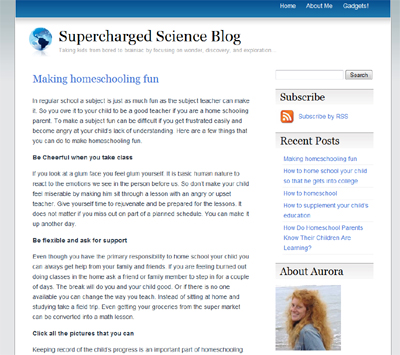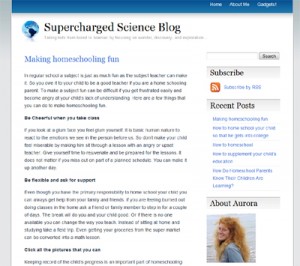12 Ways to Transform a Teaching Nightmare into an Educator’s Dream
Did you ever have a teacher that made a real impact on you? They took a subject you previously thought was dull and boring and somehow made it jump alive? Special teachers can touch our lives in small ways that make big changes later in life by phrasing a topic into just the right words so it really clicks for you, or simply just believing in you when no one else around you did. These types of teachers are pretty amazing when it comes to inspiring children. If you’ve ever wondered how some of them ‘work their magic’, you’re not alone. Most amazing teachers really couldn’t tell you how they do what they do – they just know how to reach kids effectively in a way that really makes an impact.
One of the main differences between an outstanding teacher and a dud is their ability to enter the student’s world and find out not only where they are, but also where they are coming from. In this way, teachers can structure lessons in a way that not only motivates the child to learn, but instills a deep curiosity that will continue this love of learning for the long-term.
When you truly learn how to motivate people using their preferences (not yours), you open the vault because you hit all the right access codes and can enter into their world to really make an impact on them. Think of it this way: it’s equally important how you deliver the message as well as the message itself. And when you truly understand your child’s motivational programming, you can enter their world and guide them on their path in a meaningful and impactful way.
Note that you don’t need to do all of these. Simply focus on one or two until see a change in the way your child learns. Then come back for more. Are you ready?
Paint a vivid future. Some people get really excited about moving toward a goal when you paint a picture about how great it can be. A boss at work talks about all the great projects this month, your spouse talks about next year’s vacation, or maybe you have a picture of your dream house on the wall that really inspires you to take action. For some, this is enough to inspire them to move into action. But not others.
Emphasize consequences. Other people need to really understand the consequences if they don’t move into action. These folks turn in the report at deadlines, wait until the last minute to make hotel reservations, and respond better when the worst-case scenario is painted before them.
Which one is better? Neither. One type of motivation is not right or wrong – they just are. And while we all have both, most people have a stronger preference for one. Can you see how you’d use different words with one type of child than another? “Feel free to keep the toys you clean up” may work better than “You may join us for ice cream when you’re finished cleaning your room”. Either way, it’ll be fun to figure out.
Noticing sameness. Toss three quarters on the table and ask your child to describe what landed on the table. We call these types of kids ‘matchers’. Matcherstalk about how they are all the same, all round, all silver. Matchers are a teacher’s dream to work with – they often are associated with positive attitude or optimism, and are easy to motive into action by drawing parallel examples.
Pointing out the difference. On the other end of the spectrum is the teacher’s nightmare: the kid who contradicts everything, points out every little difference in detail, appears defiant, and is often associated with the term ‘devil’s advocate’. Mismatchers playing the quarters game mentioned above will notice the one that is tails-side up, a different year, or cleaner than the rest. To motivate a mismatcher, simply use ‘reverse psychology’, but you need to do this with complete congruence if it’s going to work. This means there is no twinkle in your eye when you work with them – you are honestly entering their world and using their own motivation and doing it with integrity and caring for who they are and where they’re at.
In short: make sure they don’t know what you’re doing. It sounds so simple. And it is, as long as you are doing it from a place of honest caring and seriousness.
“I just know.” How do you know when you’re really good at something, or when you’ve really done a good job? Kids that ‘just know’ are internally motivated, meaning that they don’t ask around to see what other people think… the sense of certainty comes from within themselves. You can’t pressure an internally motivated person into doing something with peer pressure – it’s just not motivating to them. However, you can tap into their internal judgment system to guide them along.
Imagine what happens when a car salesman wraps up the conversation with an internally motivated person and says: “I can’t convince you whether this car is right for you or not. Only you can do that. I do know that you’re not going to be happy with a car that you know to be second-best.”
“What would they think about this?” Externally motivated people rely on the opinion of others to see what they should do. This one needs special care, as you don’t want to send the message to your child that you’d love them less if they don’t do something. Be sure to separate the child from the behavior when motivating an externally-motivated kid. “Hmmm… how do you think your friends are going to like being around you when you don’t bathe for a week?”
Go with the flow. Kids that enjoy the process, especially if a creative one, truly have fulfillment in the act of writing, researching, figuring out life’s problems, whether math, science, or how to fix the toilet. They really like the process and really aren’t motivated by someone telling them about what they can do when they’re finished. Kinesthetic kids are often in this class of motivation, as they like to fully associate with the process, feelings, and everything that goes with it. “Want to help fix the car after your math is done?”
Finished! However, other kids simply want it to be done and are motivated by the feeling of completion. These types of kids are compelled to complete the worksheet, put a word on every line in a notebook, or fill out a form entirely. They will often stick with a project just to feel the gold that comes at completion.
Paint the big picture. Some kids are happy to simply skim over and just get the main idea. Big picture kids get excited when you sketch out the framework, so painting a bold, bright picture of what they’re aiming for is essential before they feel comfortable moving into action.
Give me the details! Sometimes, people want to know all the little details of the process, and only get excited when they hear the intricacies of the event. It’s easy to motivate these types of kids – just take them through what it will be like, keeping in mind whether they are more receptive to visual, auditory, or kinetic communication. (For visual communicators, talk faster and paint a bright picture; for auditory, slow it down a notch and use words like ‘hear’ and ‘listen’; slow things way down for kinesthetic communicators and include feeling and touch sensory words.)
Past performance. Some people are impressed by a how long a company has been in business (“Serving you since 1932…”). Some kids relate past performance to equal the future (“Math never makes sense…”) so finding their top three greatest moments of their life (according to them, not you) is a great anchoring technique. When they get stuck, simply reference these and draw parallel examples of how now is like it was then.
Future possibilities. Others are more interested in what the company can do for them in the future (“I could tell you how long we’ve been around, but let’s focus instead on what we can build together…”). Some kids forget the past and see only future possibilities (“I wonder what I’ll get to try out this week in math…”). Kids that picture themselves as firemen, train engineers, doctors, etc. and use it to do something are all using future possibilities as a motivational technique in that moment.
In conclusion…Whew! We’ve covered a lot of ground here. Remember, you don’t have to use all of these, or even half of them. The point here is to really understand motivation and the fuel behind it so you can enter your child’s world elegantly and with true caring for where they are at so you can provide the most effective guidance along their path.
One of the most important jobs you have as a parent is to empower your child so they can do well in the world. While we’ve given you the tools for motivation, you also need to remember to stand back and let your kids ‘take on’ their own education, with you cheering for them on the sidelines. Enjoy the adventure and don’t forget to play with your kids along the way!
Click here for a printer-friendly version of this page.
 One of the simplest scientific unit studies can be based on the principle of gravity. It can involve students from kindergarten to the highest grade. Here is a set of activities and projects that you can undertake with your homeschool students using gravity.
One of the simplest scientific unit studies can be based on the principle of gravity. It can involve students from kindergarten to the highest grade. Here is a set of activities and projects that you can undertake with your homeschool students using gravity.
 Teaching science at home includes having the homeschool students perform science experiments. For this you will need some of the equipment that a school laboratory keeps. In case you have no clue where to buy such equipment or it is not that easily available in stores in your town, you can consider getting them online. Science equipment is not that difficult to buy online. You have a good choice of picking up either second hand or brand new equipment online depending on your budget.
Teaching science at home includes having the homeschool students perform science experiments. For this you will need some of the equipment that a school laboratory keeps. In case you have no clue where to buy such equipment or it is not that easily available in stores in your town, you can consider getting them online. Science equipment is not that difficult to buy online. You have a good choice of picking up either second hand or brand new equipment online depending on your budget. One of the main challenges of homeschooling is to keep children in different grades gainfully occupied during the school day. There is a tendency for the homeschool teacher to get side tracked with the demands and tantrums of the younger child if there is not enough planned to keep the younger one occupied while the elder one is being taught. Here are a few techniques that you can use to ensure that neither of the children is neglected during school hours and both get a full school day’s work done.
One of the main challenges of homeschooling is to keep children in different grades gainfully occupied during the school day. There is a tendency for the homeschool teacher to get side tracked with the demands and tantrums of the younger child if there is not enough planned to keep the younger one occupied while the elder one is being taught. Here are a few techniques that you can use to ensure that neither of the children is neglected during school hours and both get a full school day’s work done. You have three children in the homeschool classroom and find it tough to keep everyone focused on the lessons that they should be following. The elder one obviously needs the most guidance from you personally as they are learning new things every day. The youngest one needs you to hold their hand and guide them as they begin to explore writing. The middle one can always be guided by the elder sibling and so does not need your personal supervision.
You have three children in the homeschool classroom and find it tough to keep everyone focused on the lessons that they should be following. The elder one obviously needs the most guidance from you personally as they are learning new things every day. The youngest one needs you to hold their hand and guide them as they begin to explore writing. The middle one can always be guided by the elder sibling and so does not need your personal supervision.

 Being organized is the key to making the homeschool classes interesting and informative. A large onus lies on the homeschooling parent to provide the child with activities that will challenge him and help him learn new concepts. This is not something that can happen overnight. The parent needs to plan out classes in a sequence for the learning to be steady and consistent. To this end having a lesson plan book for your homeschool classes can be a major help.
Being organized is the key to making the homeschool classes interesting and informative. A large onus lies on the homeschooling parent to provide the child with activities that will challenge him and help him learn new concepts. This is not something that can happen overnight. The parent needs to plan out classes in a sequence for the learning to be steady and consistent. To this end having a lesson plan book for your homeschool classes can be a major help.



 The focus in homeschooling should lie not just in planning lessons in each subject of the curriculum and teaching them, but also in developing independent thinking in the homeschool student. By allowing a child to solve a problem on his own you are equipping him with a great tool to handle life. The natural imagination and creativity that a child possesses can be a huge asset to you as a trainer. Here are some activities that would help the child in developing his creative skills.
The focus in homeschooling should lie not just in planning lessons in each subject of the curriculum and teaching them, but also in developing independent thinking in the homeschool student. By allowing a child to solve a problem on his own you are equipping him with a great tool to handle life. The natural imagination and creativity that a child possesses can be a huge asset to you as a trainer. Here are some activities that would help the child in developing his creative skills. If you plan to take your children for a foreign vacation you might be surprised to hear that your family can use the experience as a great learning tool. This applies not only to homeschooling students but to any child; the exposure is great for broadening their horizons. Here are a few things that you can help them focus on in order to get more out of the trip.
If you plan to take your children for a foreign vacation you might be surprised to hear that your family can use the experience as a great learning tool. This applies not only to homeschooling students but to any child; the exposure is great for broadening their horizons. Here are a few things that you can help them focus on in order to get more out of the trip. Your daughter is great at writing fictional stories, but basic multiplication and division give her major trouble.
Your daughter is great at writing fictional stories, but basic multiplication and division give her major trouble.
 Socializing with the peer group is not the only thing that homeschoolers are views as missing out on. In some situations the difference between regular school students and homeschoolers can become painfully obvious. If you wonder about what homeschooling students are missing out on, here are a few regular school traditions and activities that you can consider.
Socializing with the peer group is not the only thing that homeschoolers are views as missing out on. In some situations the difference between regular school students and homeschoolers can become painfully obvious. If you wonder about what homeschooling students are missing out on, here are a few regular school traditions and activities that you can consider.
 The family vacation, a trip to a new town, a visit to grandma, or any other form of travel can be easily converted into a teaching tool for your children. While it is a good way for homeschooling parents to add supplementary lessons, travel can be used just as effectively by parents of children who attend regular school. Here are the things that you can teach them.
The family vacation, a trip to a new town, a visit to grandma, or any other form of travel can be easily converted into a teaching tool for your children. While it is a good way for homeschooling parents to add supplementary lessons, travel can be used just as effectively by parents of children who attend regular school. Here are the things that you can teach them. When you think of school, do you think of the textbooks used in each subject? Textbooks are a great way for teaching a large number of students standard information. That is why they are so popular in regular schools. However they are not the only teaching tool that a homeschool teacher can use. The homeschool classroom is a place where textbooks can be easily substituted with other instructional tools.
When you think of school, do you think of the textbooks used in each subject? Textbooks are a great way for teaching a large number of students standard information. That is why they are so popular in regular schools. However they are not the only teaching tool that a homeschool teacher can use. The homeschool classroom is a place where textbooks can be easily substituted with other instructional tools. As a parent there is a fine line between praise and just words said just to placate the child. If that parent is also the homeschool teacher there has to be a fine line between praising the child and merely mouthing the words. How much praise is enough and can you over do it?
As a parent there is a fine line between praise and just words said just to placate the child. If that parent is also the homeschool teacher there has to be a fine line between praising the child and merely mouthing the words. How much praise is enough and can you over do it?
 Equipping a homeschool laboratory does not have to cost a whole lot of money. There are a number of things that you can use from around the house. However, you will have to invest in some things that will give the feel of a proper science lab to your homeschool students. Here we discuss the different types of equipment you will need to keep on hand to conduct your homeschool science experiments.
Equipping a homeschool laboratory does not have to cost a whole lot of money. There are a number of things that you can use from around the house. However, you will have to invest in some things that will give the feel of a proper science lab to your homeschool students. Here we discuss the different types of equipment you will need to keep on hand to conduct your homeschool science experiments.
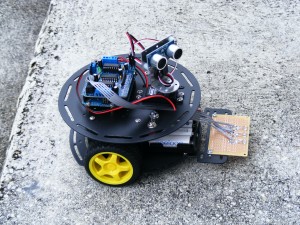
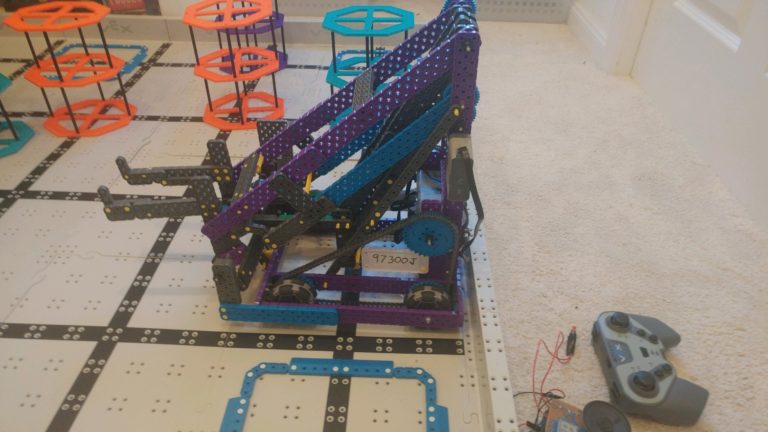



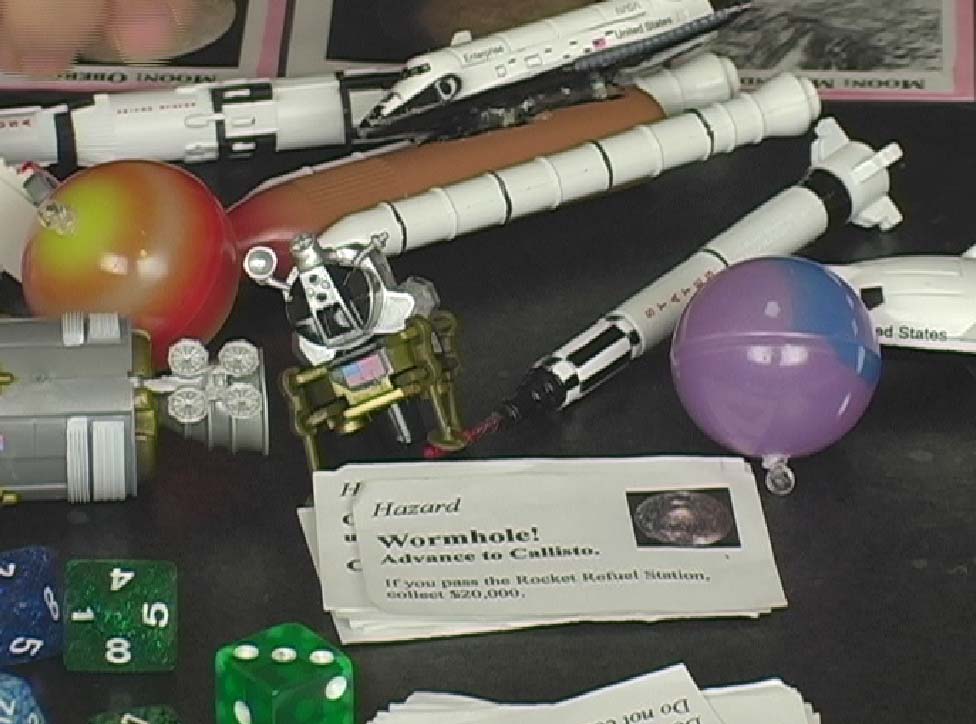








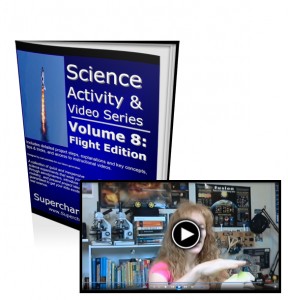


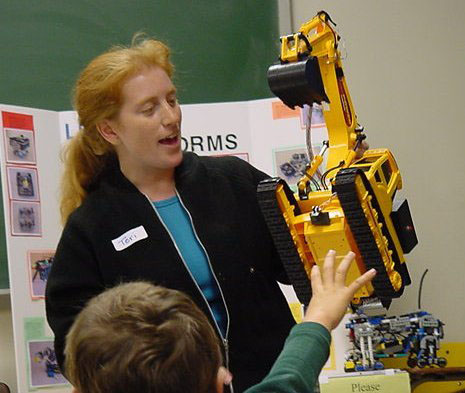
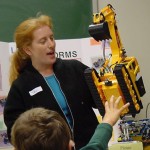 How to Teach Science That Kids Really Enjoy AND That’s Easy To Teach.
How to Teach Science That Kids Really Enjoy AND That’s Easy To Teach.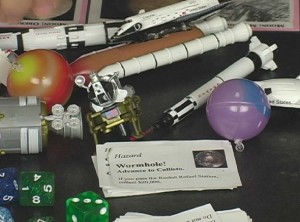


 If you've ever wanted to sneak a peek into my cabinet of educational games and books for kids, now is your chance. Use this list for gift ideas, boredom busters, and just plain family fun. Some of these games you can pick up at the store, and the rest are the home-made, print-it-out, cut-and-play variety that your kids will really learn from.
If you've ever wanted to sneak a peek into my cabinet of educational games and books for kids, now is your chance. Use this list for gift ideas, boredom busters, and just plain family fun. Some of these games you can pick up at the store, and the rest are the home-made, print-it-out, cut-and-play variety that your kids will really learn from. Math Games
Math Games Most kids love the idea of science – of building things, creating inventions, and getting stuff to work by using their own two hands. Kids have a natural passion for science. The problem comes in when the parent feels they can’t meet this need in their child, and they struggle with how to fulfill it.
Most kids love the idea of science – of building things, creating inventions, and getting stuff to work by using their own two hands. Kids have a natural passion for science. The problem comes in when the parent feels they can’t meet this need in their child, and they struggle with how to fulfill it. As a hands-on science teacher who some kids think is a bit wild, I’ve found that there are certain very specific keys to teaching science well, and without getting burnt out doing it (especially important for me, because groups regularly hire me to do multi-day science workshops for hundreds of homeschool kids). Actually, these keys just the opposite of how most schools try to teach science.
As a hands-on science teacher who some kids think is a bit wild, I’ve found that there are certain very specific keys to teaching science well, and without getting burnt out doing it (especially important for me, because groups regularly hire me to do multi-day science workshops for hundreds of homeschool kids). Actually, these keys just the opposite of how most schools try to teach science.

 When I teach a science class, this is the questions I get asked most: “What science stuff does my child need to learn?” Parents are wondering exactly what bases they should cover for their kids to understand science before they hit the high school or college scene.
When I teach a science class, this is the questions I get asked most: “What science stuff does my child need to learn?” Parents are wondering exactly what bases they should cover for their kids to understand science before they hit the high school or college scene. Have you ever picked up a textbook, filled out a worksheet, or done a science activity and wondered…“What is my child really learning with this?” Parents wonder exactly what bases they should cover for their kids to understand science before they hit the high school or college scene.
Have you ever picked up a textbook, filled out a worksheet, or done a science activity and wondered…“What is my child really learning with this?” Parents wonder exactly what bases they should cover for their kids to understand science before they hit the high school or college scene.
 Did you have a teacher that really had an impact on you? Remember the excitement? Or the thrill you felt when you taught something to someone else and they really got it? First, let me thank you for your commitment to education – a value that is high enough for you that you are stretching for resources to help you reach your goals. In this article, I am going to share with you some of the common mistakes that educators often make.
Did you have a teacher that really had an impact on you? Remember the excitement? Or the thrill you felt when you taught something to someone else and they really got it? First, let me thank you for your commitment to education – a value that is high enough for you that you are stretching for resources to help you reach your goals. In this article, I am going to share with you some of the common mistakes that educators often make.
 I’ve been traveling a lot lately and after seeing what’s on the market for science equipment… well, I just had to write this article to help you separate the trash from the treasures. (I’ve been to 13 different educational conventions in 16 months, 17 weeks of science camps, and countless other science-related workshops!)
I’ve been traveling a lot lately and after seeing what’s on the market for science equipment… well, I just had to write this article to help you separate the trash from the treasures. (I’ve been to 13 different educational conventions in 16 months, 17 weeks of science camps, and countless other science-related workshops!)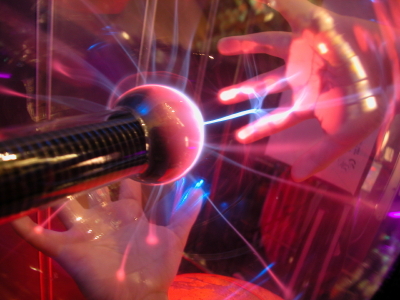
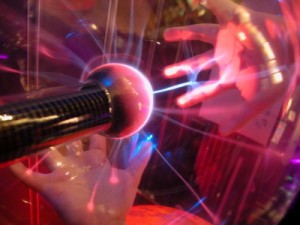 Sometimes I’m lucky just to get my teeth brushed in the morning, let alone design an experiment that illustrates Einstein’s photoelectric effect for my 7-year old son. Luckily, though, YOU don’t need to reinvent the wheel (or the light bulb), because here’s a quick list of cheap and easy experiments that really drive home the basic principles in physical science.
Sometimes I’m lucky just to get my teeth brushed in the morning, let alone design an experiment that illustrates Einstein’s photoelectric effect for my 7-year old son. Luckily, though, YOU don’t need to reinvent the wheel (or the light bulb), because here’s a quick list of cheap and easy experiments that really drive home the basic principles in physical science.
